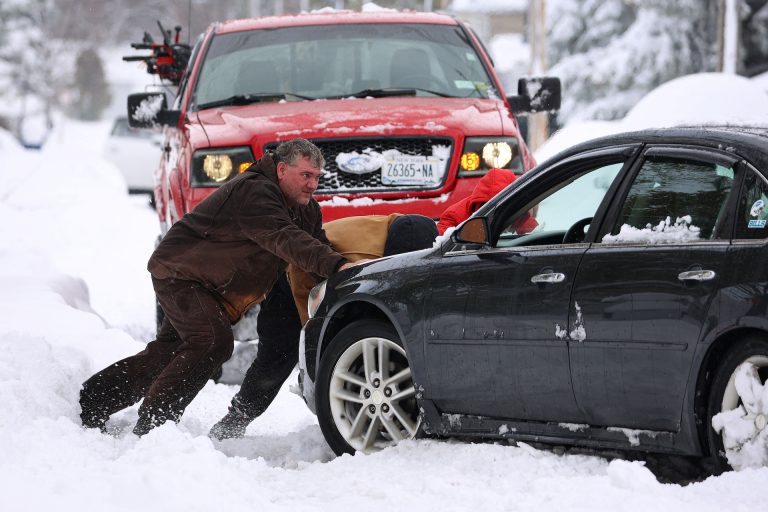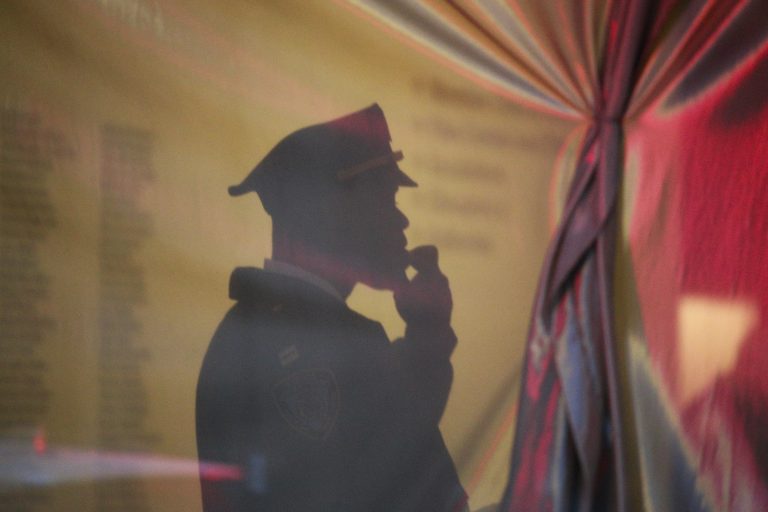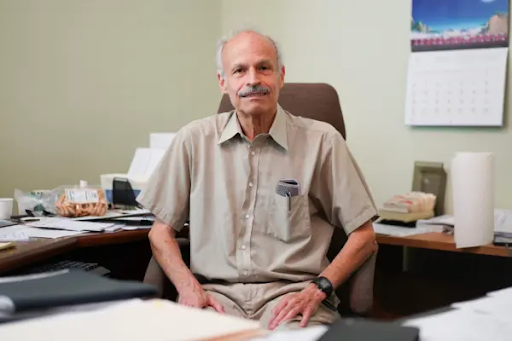BUFFALO, N.Y. — Parts of Western New York state woke up on Friday, Nov. 18 to nearly 2 feet (0.6 meters) of “lake effect” snow, about half of the total accumulations that forecasters say squalls blowing in from Lake Erie could dump on Buffalo and nearby towns this weekend.
The squalls could persist through Sunday, creating sporadic bursts of intense snowfall along narrow bands that could amount to 4-1/2 feet (1.4 meters) of snow in some locations.
By Friday, the accumulating deep snow had knocked out power to some customers, forced the closure of segments of the New York Thruway and triggered flight cancellations at Buffalo Niagara International Airport.
Even so, many Western New Yorkers, accustomed to bouts of winter weather even more severe, seemed unfazed. Twitter user @BuffaloSnowKing posted a video of himself standing outside late on Thursday evening as snow blanketed his yard. “How can you not enjoy this weather?!” he tweeted.
As of early Friday, road travel bans remained in effect for much of the central part of Erie County. But officials lifted road restrictions, at least temporarily, and instead issued travel advisories in the northern and southern parts of the county, including Buffalo, the state’s second most populous city with some 278,000 residents.
Success
You are now signed up for our newsletter
Success
Check your email to complete sign up
“It was a relatively quiet night for everybody,” including emergency response, Daniel Neaverth, commissioner of Erie County Department of Emergency Services, told reporters early on Friday morning as the snowfall eased.
The lull may prove short-lived, forecasters said. At the rate of 1 to 3 inches per hour, another 2 feet of snow could fall on the area by Saturday, said Liz Jurkowski, a meteorologist with the National Weather Service (NWS) in Buffalo.
Snowfalls of such proportions are not uncommon for Western New York in November, when the relatively warm waters of the Great Lakes can mix with frigid air in the upper atmosphere dropping down from the Arctic, according to the weather service.
Illustrating the highly localized nature of the lake-effect phenomenon, Orchard Park’s 36-inch accumulation as of 9 a.m. contrasts with the 1.6 inches that fell in Tonawanda, just 23 miles to the north, according to the weather service.
Counties neighboring Erie recorded about a foot or less of snow, with the exception of Wyoming County, which saw snow accumulate more than 17 inches in some parts.
Fewer than 4,000 customers were without power in the Buffalo area as of Friday afternoon, according to Poweroutage.us. Neaverth said he expected power in Erie County to be restored quickly.
Neaverth noted “a few minor accidents” and some vehicles stuck on roads overnight. He urged residents to remain alert, reminding them that just because the snow had eased up slightly, “that doesn’t necessarily mean that it won’t swing into that area again.”
Erie County closed its offices on Friday, though essential staffers were to report to work. The Buffalo Public Schools district, the state’s second-largest serving 32,000 students, canceled all classes and closed offices on Friday.
Jurkowski of the NWS cited multiple reports of “thunder snow” as the sky rumbled and flashed with lightning.
All but five of almost 80 flights scheduled to depart from Buffalo on Friday were canceled, the airport’s aviation director Lee Weitz said.
The prospect of up to 4-1/2 feet of powder on the ground by Sunday prompted the National Football League to move the Buffalo Bills’ home game against the Cleveland Browns to Detroit.
The storm developed as temperatures for the region, andmuch of the northern United States, plunged 10 to 20 degreesFahrenheit below average for this time of year, said Rich Otto, a Storm Prediction Center meteorologist in College Park, Maryland.
By Reuters. (Reporting by Lindsay DeDario; writing by Tyler Clifford; editing by Jonathan Oatis and Richard Chang)















